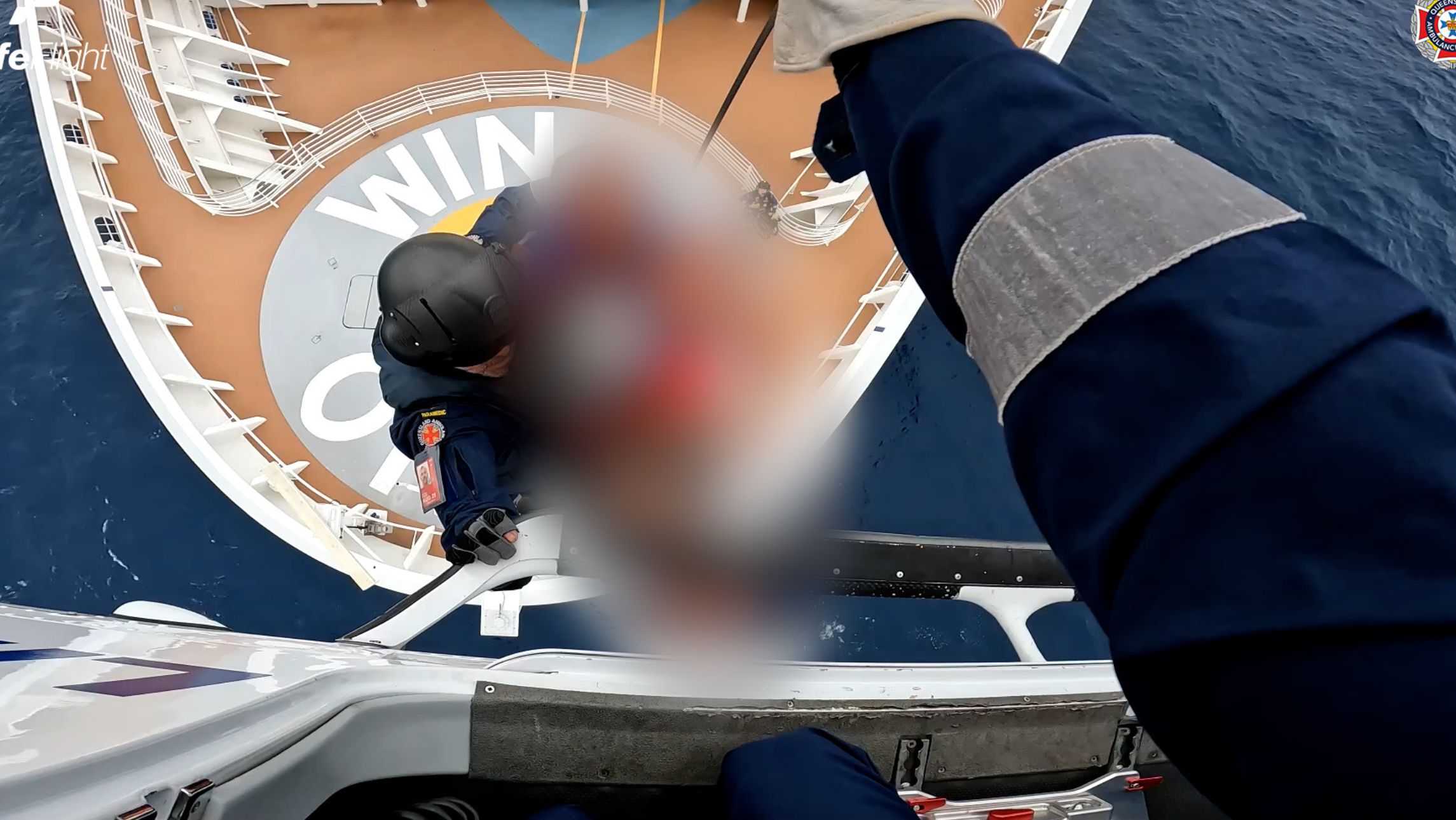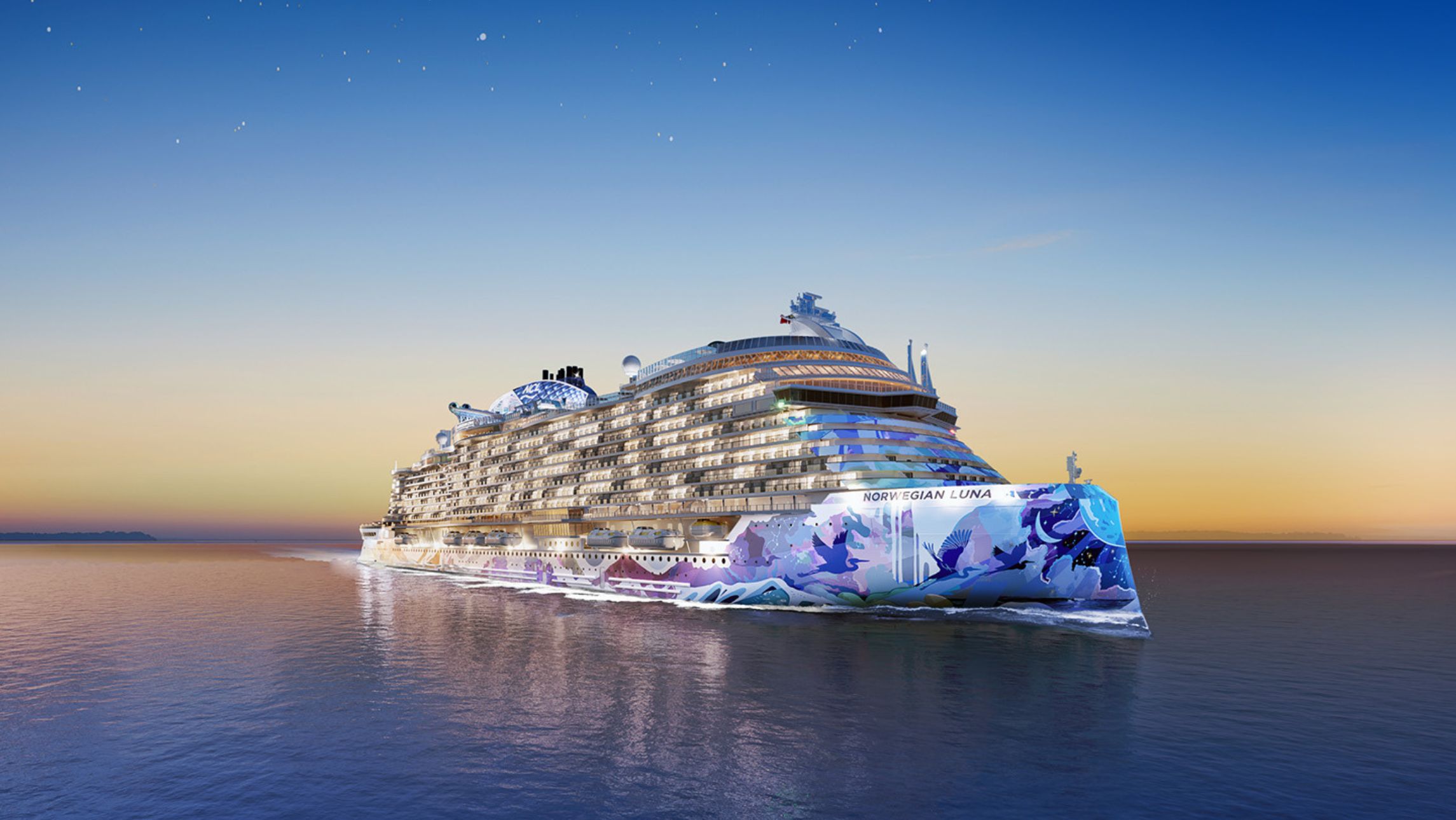Standing on the deck of your cruise ship taking the sea air, it’s hard to imagine that recent claims that you could be breathing in as much pollution as a pedestrian on the hazy streets of Beijing can be true.
That’s probably because they aren’t.
Ryan David Kennedy, assistant professor at the University’s Bloomberg School of Public Health, authored the report for the Johns Hopkins University after an investigation of “particulate matter concentrations” on Carnival Liberty sailing in 2017, MS Amsterdam, Carnival Freedom and Emerald Princess sailing in 2018.
The report raises health concerns given that ship exhausts are known to contain “dangerous constituents such as metals and PAHs” which are toxic to humans.
The report finds that while at sea, concentrations of particulate matter are significantly higher behind the smokestacks compared to the bows.
Results suggest that “patrons and staff who are in the aft areas of cruise ships, … are likely exposed to elevated levels of particulate matter, and that some of the particulate matter observed in this study was likely generated by shipping exhaust.”
As regular readers will know, these reports are not new. And many, like this one, are often statements of the obvious.
Several years ago, a similar study suggested that if you stand under the funnel of a cruise ship on a still day, the pollution could be as high as that on the pavement of Piccadilly Circus in London.
No surprises there. Cruise ships have engines that run largely on diesel. If you stand behind a bus and breathe in deeply, you’re going to be taking in “particulate matter”. If you sit in the front seats, probably not.
And while many citizens of Beijing – particularly those with respiratory diseases – do have to visit hospital wards during summer when pollution is at its highest, few cruise ship passengers have to see the ship’s doctor.
Cruise lines are questioning the validity of the tests conducted in the investigation, where air pollution measurements were taken with a P-TRAK Ultrafine Particle Counter over a couple of days while the vessels were at sea and at port.
Carnival Corporation said in a statement: “These so-called fly-by tests are completely ridiculous, inaccurate and in no way represent reality. We test the air quality of our ships and they meet or exceed every requirement.”
Carnival Corporation’s statement goes on: “The air quality on our ship decks when in port compares favourably with a typical urban or suburban environment. Independent testing on our funnels – which is the area where the exhaust originates – further validates our claims.”
“The safety of our guests is our top priority and we undertake our cruises in close coordination with national and international regulatory bodies like the EPA [Environmental Protection Agency, an agency of the United States Federal Government] to insure the utmost safety of our guests and crew.”
Roger Frizzell, senior vice president and chief communications officer of Carnival Coroporation, also told Telegraph Travel: “We have installed Advanced Air Quality Systems on nearly 80 per cent of our global fleet in close coordination with the EPA so these systems are environmentally friendly, in addition to rolling out new ships powered by LNG [liquefied natural gas], the cleanest burning fuel available, so their study is misleading and inaccurate.
“We are tested regularly by authorities around the world, such as the EPA, in order to be approved to sail in key ports.”
So what are the air pollution regulations for cruise lines?
According to the Marine Notice by the Australian Maritime Safety Authority, “sulphur dioxide and particulate matter emissions are a function of the sulphur content of fuel”.
Using fuel with low sulphur content would reduce particulate emissions and cruise ships have to follow a number of regulations on their fuel usage, which can differ depending on where they are ported or at sea.
In Australian waters, cruise ships berthing in Sydney Harbour have to limit sulphur emissions by using low sulphur fuel (<0.1 per cent) or an alternative measure that achieves an equivalent outcome.
The alternative measures include the use of Exhaust Gas Cleaning Systems (EGCS), an external power source or and combination of the above.
Beyond the harbour, the fuels used can currently contain up to 3.5 per cent sulphur.
But from January 2020, there will be a global implementation of the International Convention for the Prevention of Pollution from Ships, which limits sulphur content in fuel for all ships to 0.5 per cent.
The International Maritime Organisation (IMO) also requires the sulphur content of fuel oil for ships operating in designated Emission Control Areas (ECAs) to be <0.1 per cent.
The designated ECAs include the Baltic Sea, North Sea, the North American area (both east and west coasts of the United States and Canada) and the United States Caribbean Sea area.
According to Cruise Lines International Association (CLIA): “Globally, the cruise industry has already invested $1 billion in new technologies and cleaner fuels, to significantly reduce ships’ air emissions.”
“Looking ahead, the industry has committed more than $8 billion to construction of highly advanced LNG-fueled cruise ships, which will have even lower emissions and higher energy efficiency.”
This includes 26 LNG powered ships in the global cruise ship orderbook and plans to fit EGCS on almost 40 per cent of CLIA’s fleet.
“Both LNG-powered ships and advanced air quality systems provide reductions in particulate matter,” says CLIA.
So should you be concerned when reading reports like the Professors?
Well, it’s true that cruise ship engines do emit fumes and particulates. But since there are few reports that passengers have been affected, it is not something to worry about.
And the advance of LNG vessels – and even hybrid vessels with electric power in the Polar regions – shows there is a lot being done to lessen the environmental footprint of our ships.








